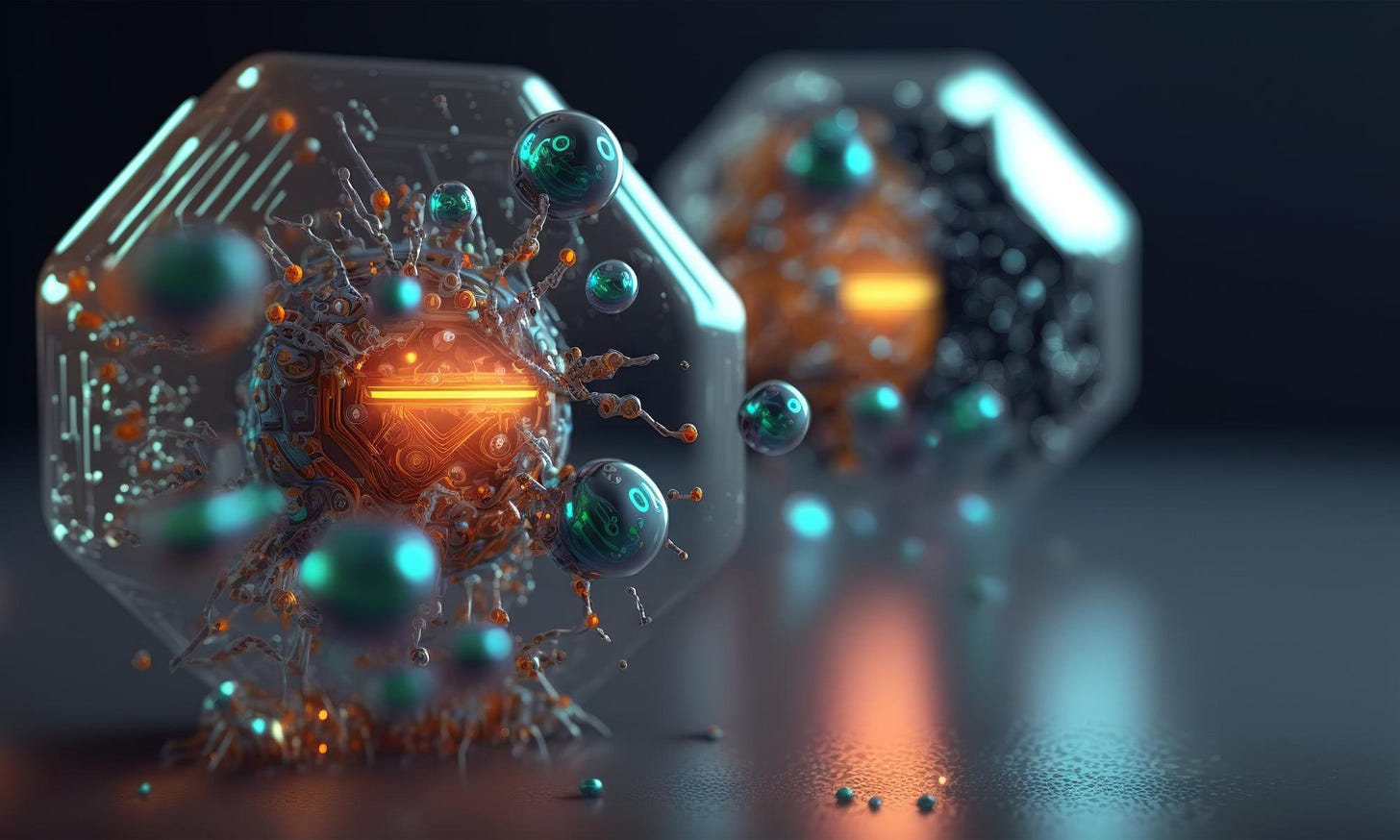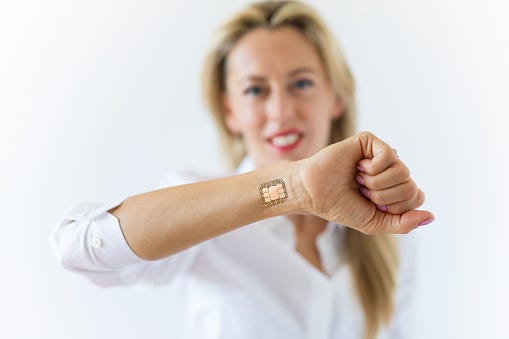Traditional Technology v Transhuman Technology
It’s one thing for us to develop technologies to help our daily living, whether work or leisure , it’s another thing to be enhanced by and subordinate to technology. Enhancement brings enslavement. We are to be the overlords, under God, not the slaves of technology.
I am NOT a science person, although I do read alot about neuroscience. So keep in mind that the terms I use in this post are probably laughable to those who actually work in these fields. Regardless, I am speaking in super layman’s terms.
Technology: a manner of accomplishing a task especially using technical processes, methods, or knowledge
The Mayans used technology and so did whomever built the pyramids.
What I like about this definition is the word, knowledge. I believe the Mayans had access to non-human knowledge and some of their technologies involved sound waves, constellation mapping, and ley lines for the purposes of ritual worship.
Traditional technology, for me, is the world of engineering that relies only on human knowledge and innovation; does not involve integration with human anatomy or damage to human anatomy and consciousness. I think of the basic tools of indigenous peoples in distant eras to advanced work of wired communications or fossil-fueled powered mechanisms we still use today.
Some of the technologies we have seen emerge in our lifetime, likely started in the late 1800s, and were released to the public in the last twenty to thirty years. The particular technologies that concern many of us, have the potential to enslave and undermine the kind of human God created us to be, through Adam and Eve. I call these technologies: transhuman.
Transhumanism - transhumanism, philosophical and scientific movement that advocates the use of current and emerging technologies—such as genetic engineering, cryonics, artificial intelligence (AI), and nanotechnology—to augment human capabilities and improve the human condition. Transhumanists envision a future in which the responsible application of such technologies enables humans to slow, reverse, or eliminate the aging process, to achieve corresponding increases in human life spans, and to enhance human cognitive and sensory capacities. The movement proposes that humans with augmented capabilities will evolve into an enhanced species that transcends humanity—the “posthuman.” Transhumanism | Definition, History, Ethics, Philosophy, & Facts | Britannica
As we are learning, the EMF harms of wireless technologies—the transmission of data using radio waves—increases when we are surrounded by “'smart”' everything. In an attempt to protect ourselves, and still benefit from this new era, we’ve invented EMF blockers and faraday shields for laptops and other regularly used devices. Content with being slaves to leisure—after all, setting your dishwasher cycle and home security system via your smartphone is just plain convenient, we continue to walk down a road where if we are not careful, one day smartphone controls will be replaced by wireless tech embedded in our persons. Oh wait, we are already here: nanotechnology.
The development and scope of nanotechnology have witnessed rapid advancements in tandem with other types of digital medical technology, such as machine learning (ML) and artificial intelligence (AI). These developments present material opportunities for the delivery of personalized medicine and healthcare strategies at the nanoscopic scale, especially where advances in ML enable faster, more effective cross-platform communication and better, more accurate interpretations due to the vast amounts of data accumulated by AI systems (Singh et al., 2020a). The nature of these hybrid types of technology has the potential to revolutionize healthcare delivery but presents several legal and ethical challenges. For example, nanomedical devices are increasingly integrated with the so-called “Internet of Things,” such as smartwatches and smartphones, especially in terms of health and medical applications. Additionally, innovations in nanomedical technology related to health monitoring allow doctors to easily monitor glucose levels in blood vessels (El-Din and Manjaiah, 2017) or determine stented vessels in the heart that are blocked by in-stent restenosis via nano-sensors in heart stents (Hoare et al., 2019). Although this review focuses on ethical and legal issues related to nanomedical technology, it recognizes the intimately linked nature of nanomedical technology to AI and ML, as these tools have the potential to become integral to the effective delivery and interpretation of nanomedical technology and are tangentially related to the ethical and legal concerns surrounding nanomedical technology.
Citation: Ethical and legal challenges in nanomedical innovations: a scoping review - PMC
Can the integration of the external components, no matter the size, with our anatomy, no matter how noble the cause, be considered transhumanism technology? Inventions like pacemakers saved many a life, even my grandfather’s, and seem quite reasonable and were definitely effective. He lived to be 102.
Is the ethical problem to this integration—bridging our anatomy with man-made technologies have to do with the size of the component, or the interface—the connection to an external device or a data center, like the server at your hospital? Besides the ethical questions that emerge, the issue of privacy concerns many of us as well.
A guy at a local phone store told me yesterday about the new Ray Ban Meta glasses. I was shocked. This is not only a vehicle for invading people’s privacy, but getting us more comfortable with interfacing with smart technology every waking moment.
The ubiquity of portable digital cameras, including wearable ones, has had a significant impact on how we document our lives while also reigniting legal and ethical debates around privacy and surveillance.
In many Canadian jurisdictions, people can be photographed in a public place without their consent, unless there is a reasonable expectation of privacy. However, restrictions apply if the images are used for commercial purposes or in a way that could cause harm or distress. There are exceptions for journalistic purposes or matters of public interest, but these can be nuanced.
Number 4 on the list of Our 10 Best Smart Glasses – 2025’s Top Winners is this one:
Main highlights
【Three Translation Modes】These Bluetooth Translation Glasses for men provide three versatile translation modes: Free Talk Mode for natural conversations, Audio Transcription for clear speech-to-text conversion, and Photo Translation for instant text recognition
【Supports 138 languages】 Giinova smart translation glasses with Chat GPT support two-way translation between 138 languages, covering 98% of mainstream languages, easily handling various scenarios and ensuring barrier-free communication
【Physically-Changing Lenses】These 2-in-1 transparent Bluetooth glasses are equipped with physically-changing lenses that slowly transform into sunglasses outdoors and revert to transparent lenses indoors, providing optimal vision and eye protection in any environment
【Perfect for Multiple Scenarios】 Whether you're traveling, attending business meetings, driving, hiking, fishing, or simply enjoying music, Giionva smart glasses with bluetooth for women enhance your experience with hands-free translation and audio support
Lastly, I want to bring up the new Pay By Palm technologies in the US. Panera Break uses it as well. Apparently in Sweden, people are already embedding chips in their hands.
Amazon announced that the palm recognition service, called Amazon One, will be used for payment, identification, loyalty membership, and entry at over 500 Whole Foods and Amazon Fresh locations across the nation by the end of the year. Amazon releases new cashless "pay by palm" technology that requires only a hand wave - CBS News
So what is safer for humanity? Traditional technology or what I call transhuman technology—allowing our physical bodies (even brains) to integrate with external software, AI and data centers? Please, readers, feel free to weigh in!








